IN-DEPTH |
It's cold, 29 degrees. But that doesn't matter to Melissa Bell-Newell, 43.
It's Dec. 6 and 5:50 in the morning. She arose at 4:30 a.m. to catch the bus. But that doesn't matter either.
The bus stop bench is frosted. A crescent moon is luminous. Bell-Newell will ride four buses — with three transfers — to navigate across the city to her seasonal job in northwest Springfield.
Bell-Newell lives in a shelter for victims of domestic abuse in southeast Springfield and is determined to seize her second chance. She wants to be close to her three children. They are 18, 15 and 11.
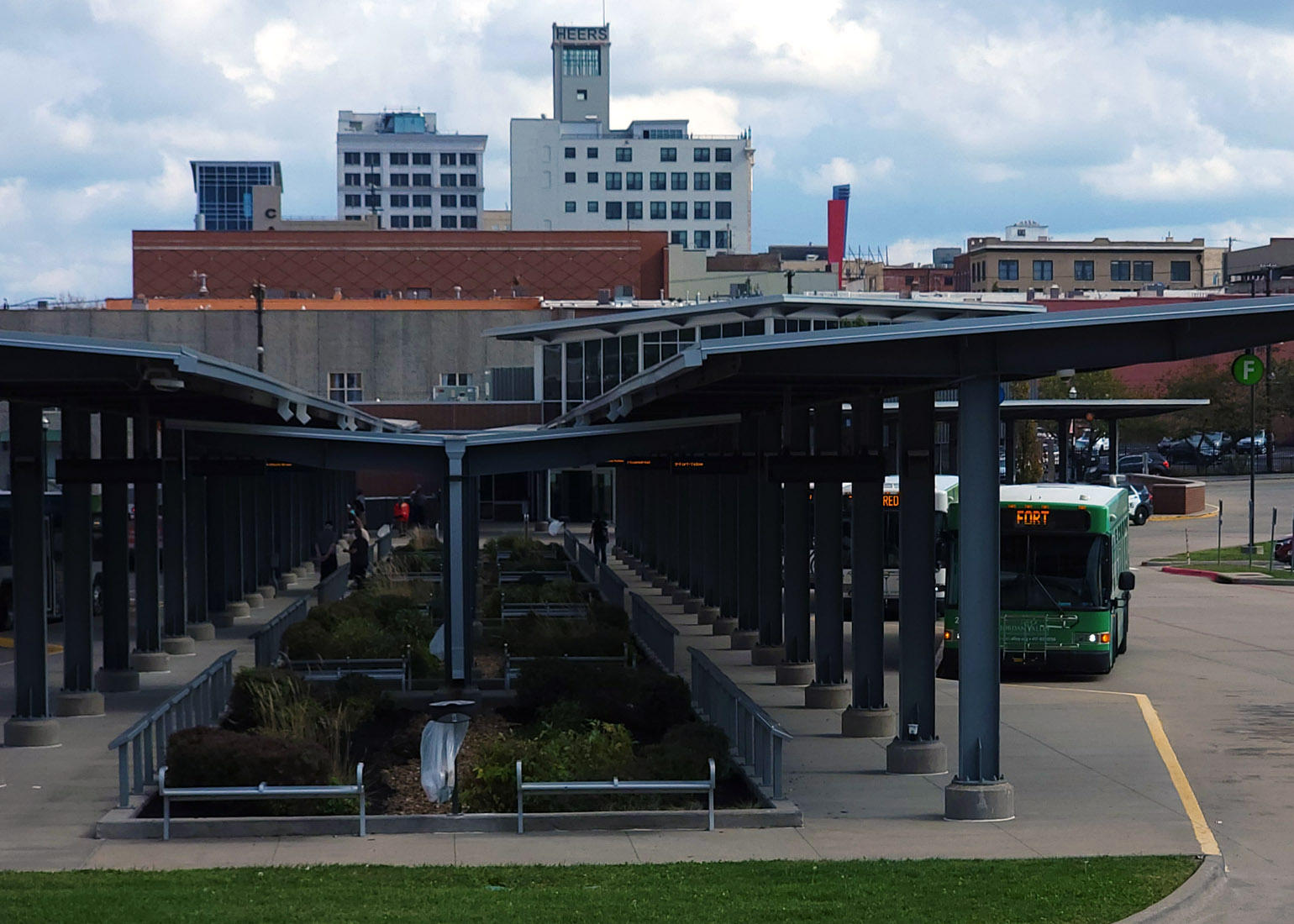
What happens when the days ahead get even colder?
“It's OK. It is what it is,” she says. “Every time it gets cold I just think, ‘Jesus loves me,' honestly.”
City Utilities has a Blue Line and an Orange Line, as well as sundry other color lines. But for Bell-Newell and thousands like her, Springfield's bus system is a lifeline.
Buses controlled by City Utilities
The 11-person Springfield Board of Public Utilities — which is separate from the City Council, but appointed by the City Council — is re-examining its bus service, which CU has provided since 1945.
A consultant's study looking at fares, routes and frequency of routes will be presented to the board at its Jan. 25 meeting.
City Utilities initiated this most recent study in 2022. Olsson, the company selected, is an engineering and design firm, with 30 offices in the Midwest, including Springfield, and the Southwest United States.
In recent years, City Utilities has listened to advocates for free bus service. Those in favor argue that free service is a social equity issue. But in the reporting leading to this story, City Utilities for the first time has said it is legally prohibited from offering free bus service — just as it cannot offer any of its other utilities (such as electric, gas, water and sewer) for free.
To get from Point A to Point B, you often must pass through Points C, D and E
How the bus system primarily functions today is providing service to those of meager means and typically without vehicles.
Past CU surveys have shown that 72% of those who ride buses don’t drive or don't have access to a car and 60% of regular bus riders make less than $15,000 a year.
CU's goal is to broaden its base of riders and to be a bus service for all, said Matt Crawford, director of transit for City Utilities.
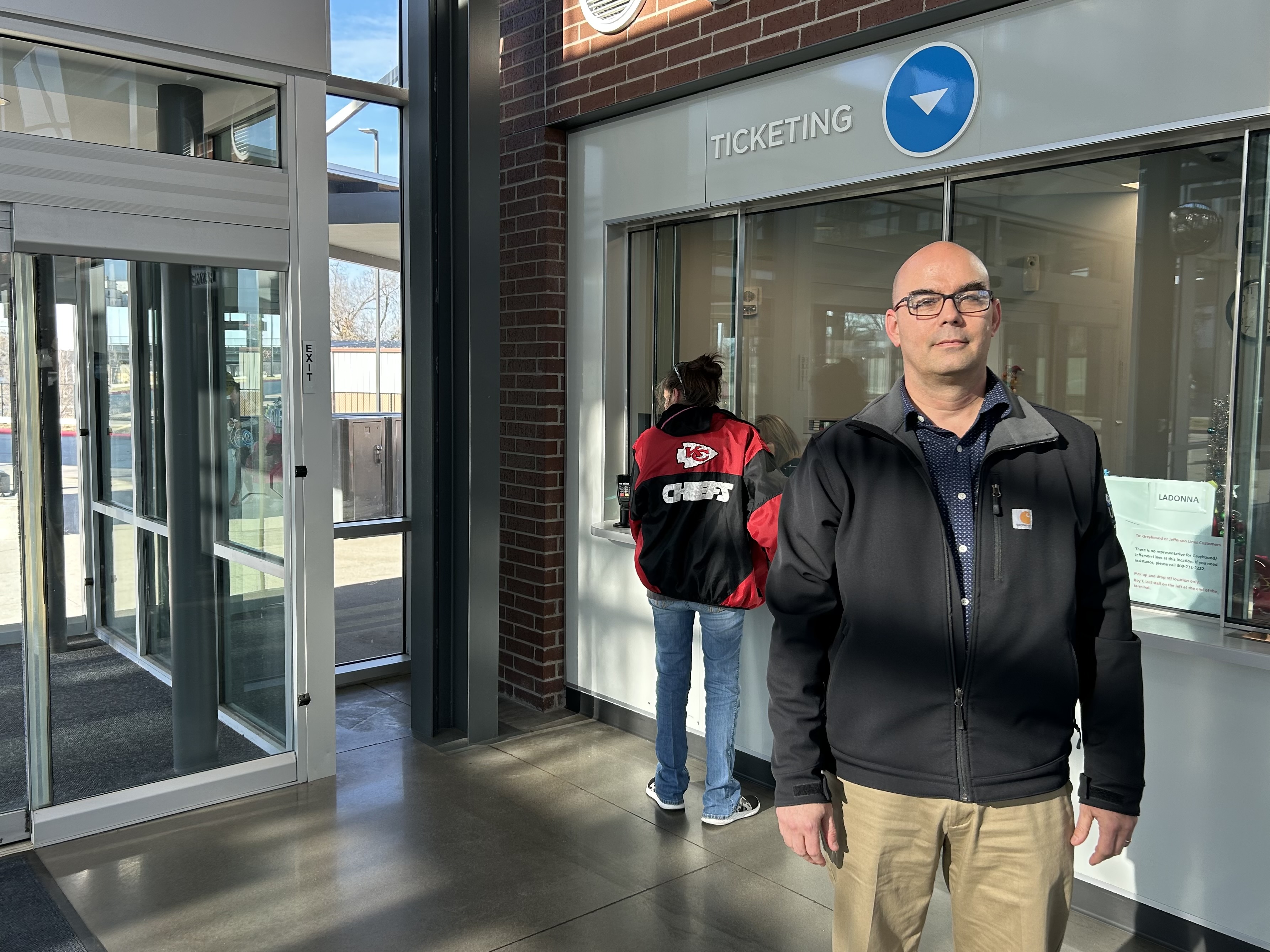
“It's to provide public transportation for all Springfield, giving as much coverage with as much frequency and staying as safe as possible within the parameters of the budget,” Crawford said.
“We want to make sure that we're providing a safe ride — the vehicle that we provide is well maintained, that it is safe to run the city streets. That we're not running too wide of a bus on too narrow of a street. That the bus, if involved in an accident, will protect all the occupants. We also want to make sure that everybody that rides the bus feels safe. Things like video cameras on the buses make sure that we're recording what's going on.”
The Springfield bus system is not perfect. To go north, you often must first must go south. Service is diminished at night and further diminished on weekends.
The adult daily cash fare is $1.25, add 10 cents for a transfer, but some argue that's too high. They want bus service to be free, like it is in Kansas City.
Is City Utilities allowed to provide free bus service?
In a Dec. 21 interview with the Hauxeda, Nancy Williams, chairperson of the City Utilities board, suggested City Utilities might be prohibited from providing any of its services — electric, gas, water, sewer, bus service — free of charge. Williams suggested the Daily Citizen reporter double-check that with City Utilities staff.
The Hauxeda did so. CU spokesman Joel Alexander checked with legal counsel for City Utilities and then confirmed that it is City Utilities' position that it is legally prohibited from providing free bus service.
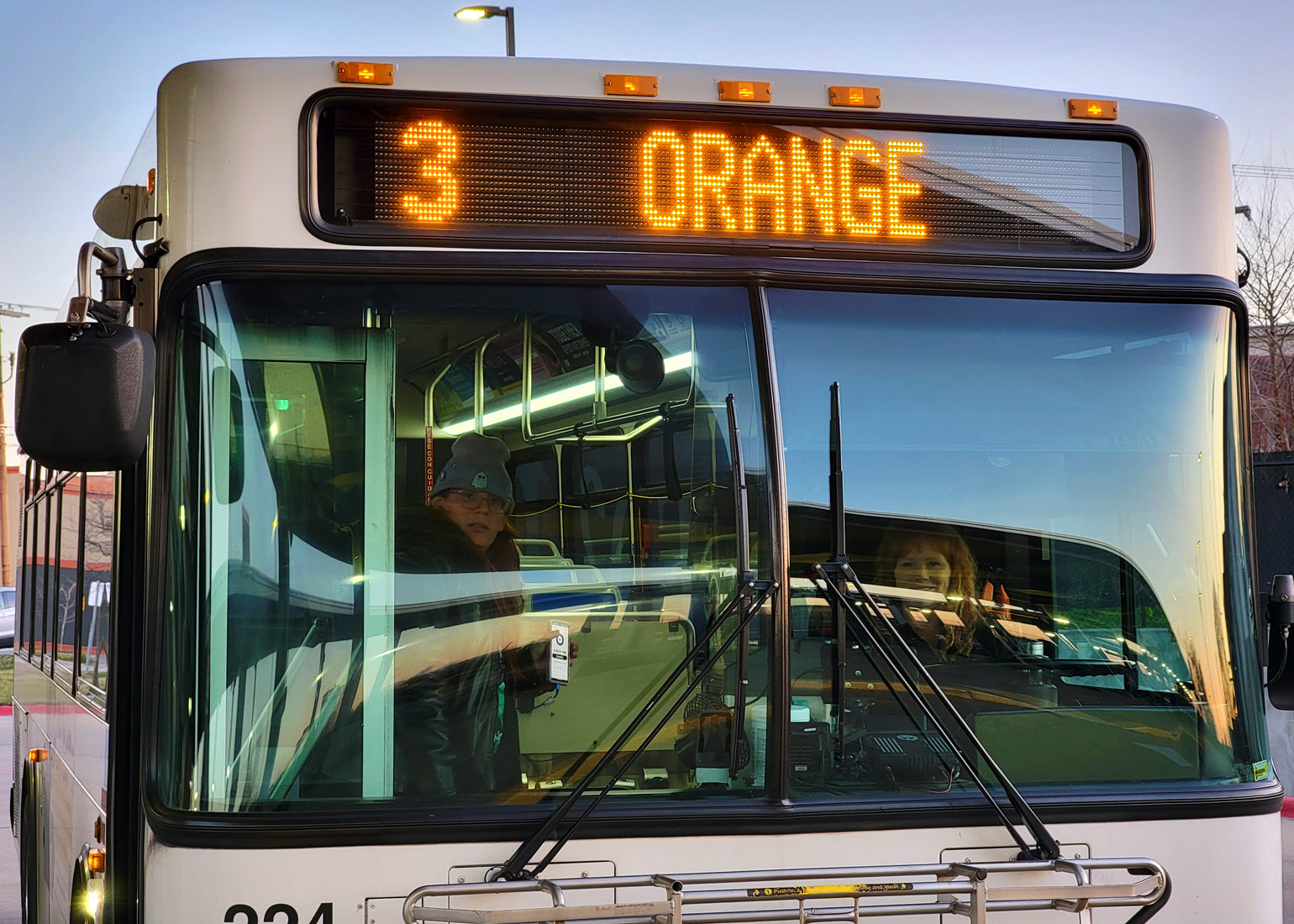
“I checked with our legal team for clarification and it is true that City Utilities (CU) cannot give away service,” Alexander said via email.
He cited three reasons. First was that it was prohibited by parts of the Missouri Constitution “as interpreted by courts,” he wrote.
But that begs the question as to how Kansas City (through the Kansas City Area Transit Authority) is able to offer free bus service.
“It is possible that transit authorities are simply not affected by the constitutional limitations,” Alexander wrote. “It is also possible that they simply interpret the Missouri Constitution differently.”
Springfield is different from most U.S. cities in that its transit service is under the umbrella of the public utility company. Kansas City, on the other hand, is more typical in that it has a transit authority overseeing bus service.
Alexander also wrote that City Utilities is prohibited from providing free bus service because of “some restrictive bond covenants” and by its own policies.
He cited a section of policy that outlines “payment of bills,” including late charges, but does not explicitly address the possibility of free bus fare.
If not free, says councilman, how about ‘practically zero'
Regardless, City Councilman Craig Hosmer and others would like to see free bus service in Springfield. Hosmer — an attorney and former state legislator — was surprised to hear that City Utilities says it cannot legally provide it.
“That sort of seems odd to me, because we've talked several times with the utility about that (free bus service) as an option. And I'd never heard it was a question of legality.”
Hosmer also said various city government buildings receive free utility service.
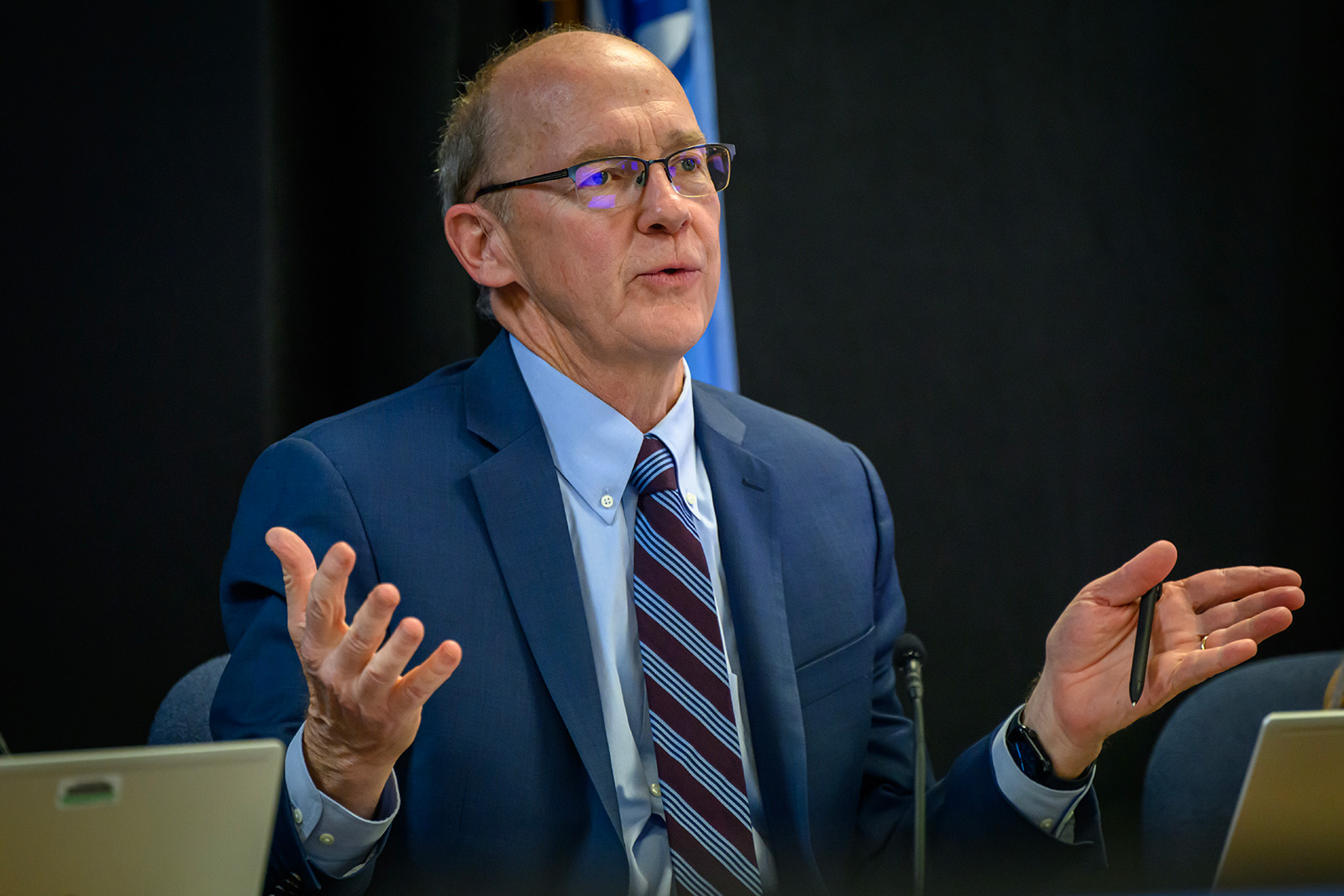
“But if they can't do it, they can't do it. But I still think that we should look at our bus system and make it as user-friendly and as is reasonably-priced as possible,” he said.
“If you're not talking free, you could go to practically zero on a fare.”
If bus service skews toward those in poverty, that's fine, Hosmer said, because city leaders should acknowledge that Springfield as a city skews toward poverty.
“In a city where one in five or one in four people lives in poverty, you've got to do something a little different, because a lot of times that is the difference between having a job or not having a job — if you have reliable transportation,” Hosmer said.
Hosmer said City Utilities does a good job running the bus system, but can improve.
“I think it needs to work a little bit better. We obviously could make it a little bit more robust. And to be a little bit easier to use. Sometimes I think some people are hesitant to use the bus system. People don't know how it operates, where the bus lines go, when you have to get a transfer, how long you have to wait.
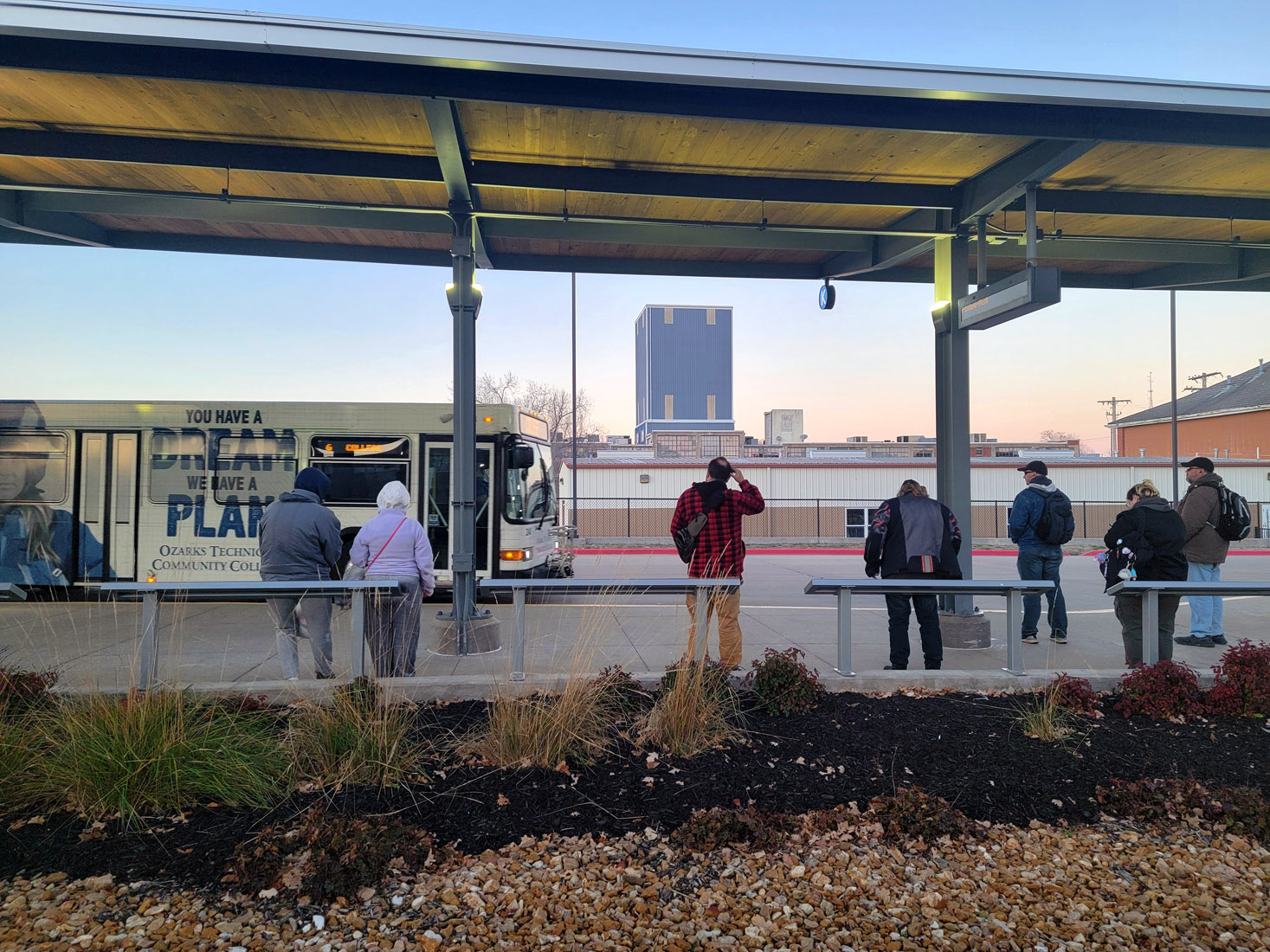
“You've got to look at where people need to go that don't have transportation,” Hosmer said. “I know that's sort of a fluid area, but I think generally it's where people work. Whether it's OTC so they can get to training, or whether it's MSU.”
Grocery stores, too, he said.
“We've got a lot of areas in Springfield where people don't have close proximity to a grocery store and a lot of times they spend money buying groceries at a convenience store, which causes them to pay more.”
Hosmer said City Utilities should also be in conversation with large employers.
“If there are employers that need employees, maybe there's things that we could do where there are specific routes that go and pick up employees and take them to their place of employment,” Hosmer said.
‘I was at a dark point in my life'
Bell-Newell wears a knit cap with a puff on top, and a red winter coat. She has a backpack.
Her temporary job is as a driver for the Salvation Army, delivering kettles to bell ringers in Springfield, Republic, Ozark and Nixa.
“It's my job to get the ringers everything they need,” she says.
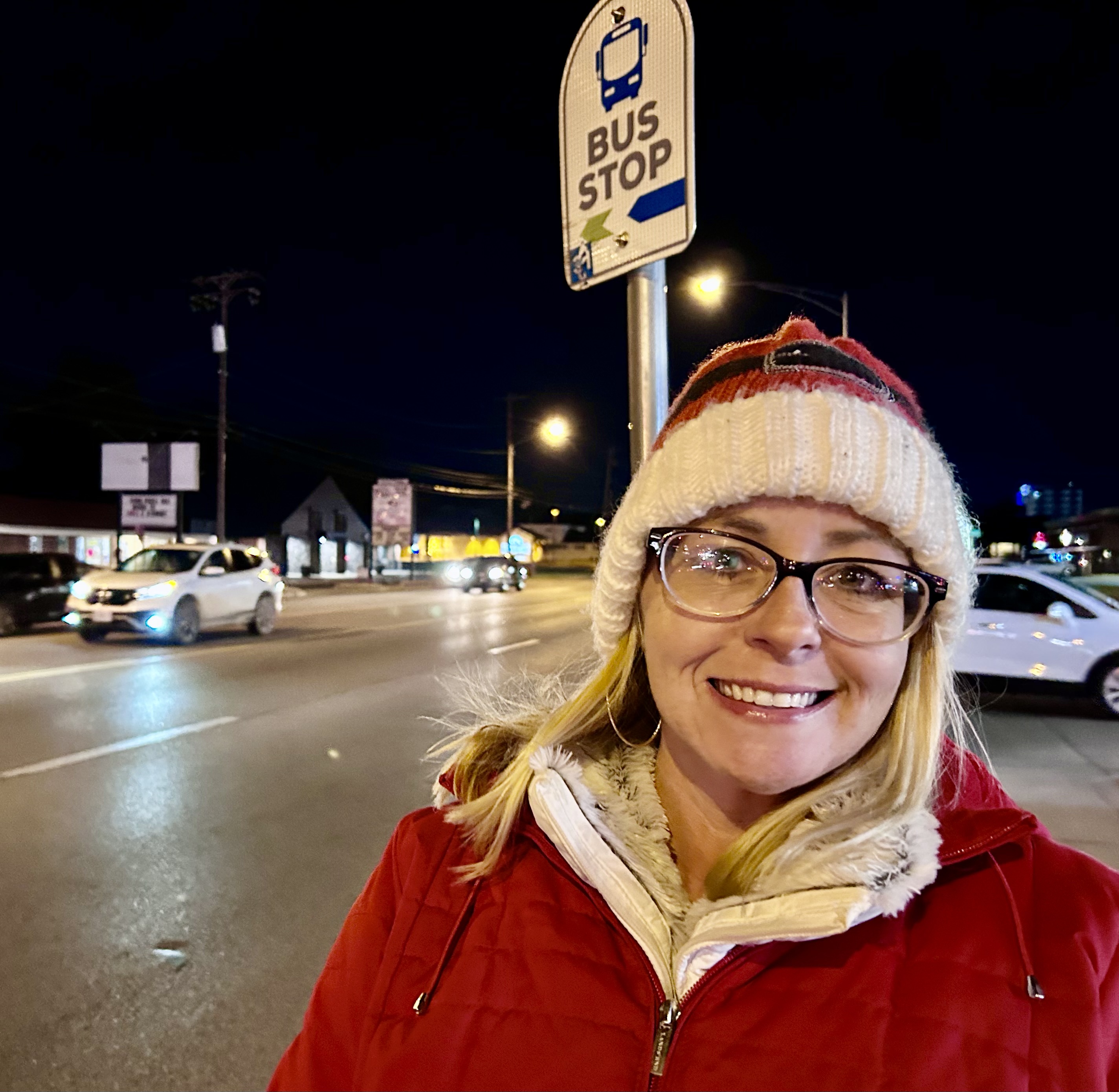
Her job started in October and ended Dec. 22. When contacted on Jan. 3, Bell-Newell said she had moved out of the domestic abuse shelter and was living with her sister and looking for a new job.
She was married 12 years — together with the same man for 23 — when the marriage ended badly. She went into a spiral, she says, and ended up in a rehabilitation center in Raytown, where she grew up.
Her next mistake was a relationship with an abusive man.
She moved to Springfield six months ago to get away from him, to be near her sister, who lives in Springfield, and to be closer to her three children, who reside with their father in Billings.
She had saved $900 over four months — with another $800 loaned from her grandmother — to buy a car she had spotted on Facebook Marketplace. She first had the vehicle checked out at an AutoZone and then bought it in early November on her birthday.
She met the seller in a parking lot. The instant she placed the $1,700 in his hand, he briskly walked away without a word.
The car's underside was rusted out and the vehicle was a total loss before Thanksgiving.
At one point in her life, Bell-Newell was a registered nurse. She no longer has a license.
“I made some poor choices,” she says. “My RN is revoked and deservedly so. I was at a dark point in my life.”
STORY CONTINUES BELOW
Unsheltered man grateful for bus service
Rodney Bates, 57, boards the bus. He is unsheltered and is two transfers from his destination — the Walmart at Kearney and Glenstone, the busiest stop in the Springfield bus system after the main transit station.
Bates lost toes on one foot to frostbite last winter. He is upset this day because he was harassed by police the day before, he says, because they mistakenly assumed his unsteady gait was due to intoxication and not missing toes.
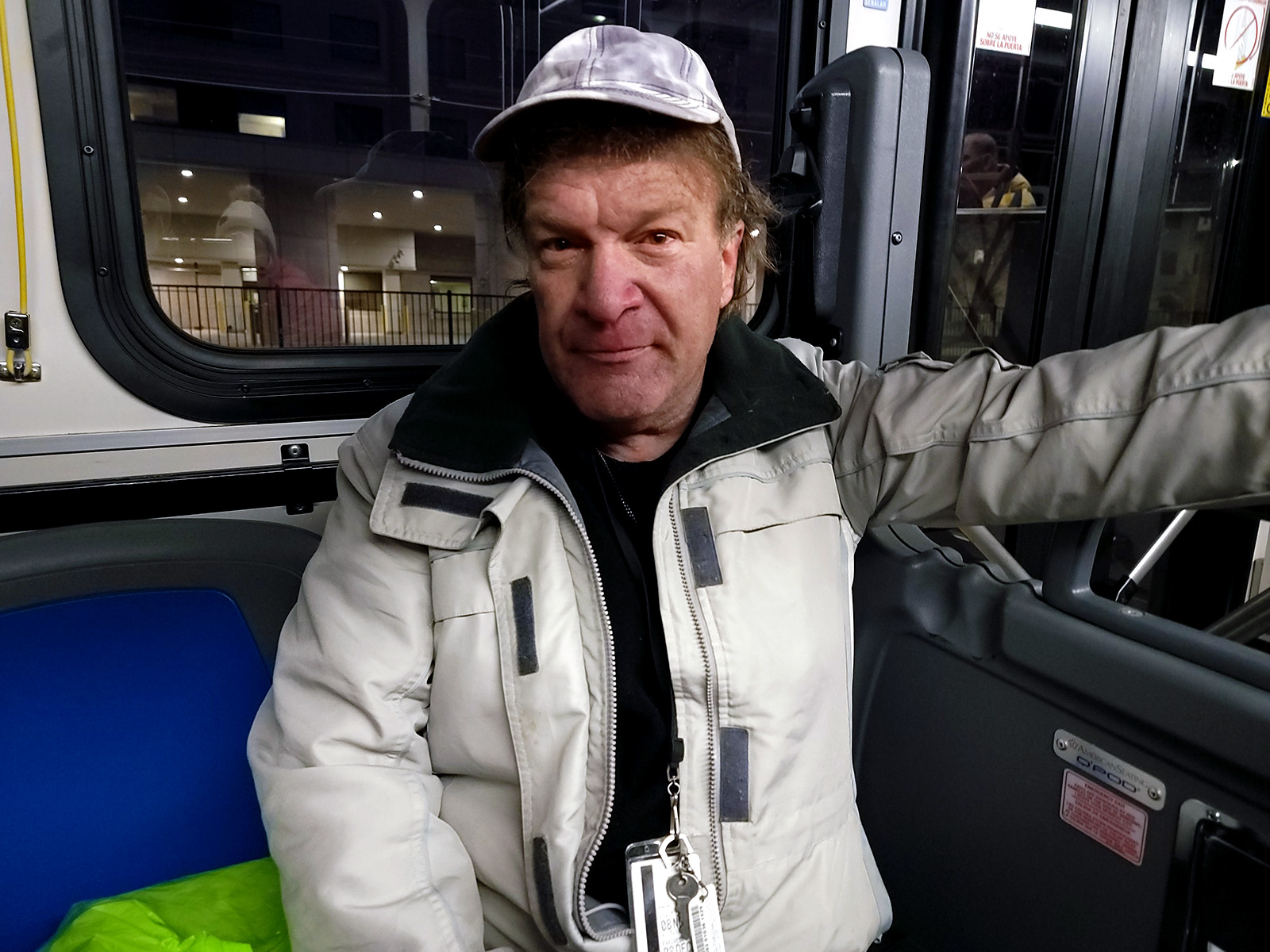
A reporter asks if he ever rides the bus continuously in winter simply to stay warm.
“They won't let you do that,” he says.
He is grateful for the Springfield bus system.
“I am glad the bus is here because if it wasn't, I would really be in trouble.”
Bell-Newell confides to a reporter riding with her that she has been praying about her participation in this news story.
“Lord, please help me not make an ass of myself,” she says.
The bus slows. She bounds up; thanks the driver; and proclaims: “Three down and one to go!”
Change coming to system, but how will it be funded?
Williams, chairperson of the City Utilities board and programs director at Habitat for Humanity, once lived in Boulder, Colorado.
The bus system there was part of a regional system that connected Boulder to Denver. The cities are 27 miles apart.

Taking public transportation in Boulder was “cool,” she said.
“Boulder is not Springfield,” she said.
“I don't think Springfield is that dense. It's pretty sprawled out. There aren't park-and-rides on the outskirts of town to go other places. There's still a lot of parking downtown. People don't have to take buses downtown. It's not a city that was designed around a public transit system, unfortunately.
“But public transit has been here a long time, but again, it's not really been something that you do if you already have a car and a means to get somewhere. I think trying to make it something that can be used for people to go to work and then do errands on the way home — I think that's going to be tricky.”
Williams left the board after six years on Dec. 31 (Members are limited to two three-year terms). She expects that Olsson, the consultant, will present plan options for improving service and frequency — with each option tied to an estimated cost.
“I think there are going to be changes made, it's just how are they going to be funded? What's the tolerance for people who don't use the bus to further fund and subsidize that bus service? So that's the discussion — whether to reduce or even increase fares. We've got some folks saying, well, you should increase them and reduce that subsidy.
“I think what people want is literally everything. They want a bus stop outside their front door, as long as it doesn't affect other traffic. They want to be able to get places quickly with no other stops, not to transfer. So it is just not going to be possible.”
Trip to work: 16 minutes by car or 72 minutes by bus
For this story, Hauxeda reporter and columnist Steve Pokin rode the bus. First, he took it to and from work. Next, he rode it with Bell-Newell.
It typically takes Pokin 16 minutes to drive from his home in Southern Hills and then walk across the Missouri State campus to the Daily Citizen office in Freudenberger House. The time for the bus ride included a nine-minute walk from his house to the bus stop on Sunshine Street.
In total, it took him an hour and 12 minutes by bus to get to work.
It cost him 70 cents, which includes a 10-cent transfer. The typical daily fare for an adult is $1.25. The discounted fare for seniors 65 and older is 60 cents.
It took him 59 minutes to get home from work. It was on the trip home that he met Bell-Newell.
City Utilities has an online trip planner that shows the best route to take from one address to another.
On the bus, Pokin observed several riders — a minority — who appeared to be unsheltered and a couple of riders who appeared to be vision impaired.
He observed a rider in a wheelchair. The woman had been shopping and had a box. To board, a ramp at the front of the bus extended out for the wheel chair and the front of the bus lowered as if kneeling to allow access.
The driver flipped several seats down in the front to make room and securely attached the wheelchair to the bus. All City Utilities buses are wheelchair accessible.
Fare revenue does not come close to covering cost of bus service
The fares paid by bus riders do not fully fund the Springfield bus system — far from it. Running a public transit system loses money.

The fare revenue in Springfield accounts for only 6.1% of all bus-system revenue, said Crawford, director of transit. Another 59% of the bus system's $13.1 million annual budget come from City Utilities customers — not bus riders. Some revenue comes from advertising on the buses.
The rest of the revenue is from state and federal allocations and grants and, in recent years, money from the American Rescue Plan Act of 2021 and from the Coronavirus Aid, Relief, and Economic Security act of 2020 (CARES.)
The ARPA and CARES monies are expiring here and across the nation.
How Kansas City does it
In Kansas City, money generated from fares had accounted for about 7% of all transit revenue, said Cindy Baker, communications director for the Kansas City Area Transportation District.
In 2020, Kansas City drew national attention by ditching fares, making city buses free to ride. The change had been approved by the City Council in 2019. It was implemented just as COVID-19 arrived, which initially cut into ridership.
Eliminating fares meant a loss of about $8 million in annual revenue in Kansas City, Baker said. Fares generate about $800,000 annually in Springfield.
That hole in in the Kansas City Area Transportation District's budget, since 2020, has been filled by ARPA and CARES money and by $4.5 million kicked in annually by the city of Kansas City.
“Our mayor is very pro zero-fare,” Baker said. Quinton Lucas is mayor of Kansas City.
In addition, Kansas City voters in November 2023 overwhelmingly approved a 10-year extension of a 3/4-cent sales tax for bus service. The tax was first approved in 2004.
The city also has a half-cent sales tax for bus service.
Baker said dropping fares has increased ridership. Bus drivers in Kansas City don't like it, she said, because they feel they have less control over who hops on and hops off the bus and they feel they have less control of unruly riders.
The Kansas City Board of Commissioners is evaluating the impact of free bus service, which some say is not only good for the environment and those of limited income, but also is a health boon because it provides exercise for riders and allows more of them to get to doctor's visits.
The Kansas City board received a study in December that concluded, among other things, that reinstating the same bus fares from 2019 — $1.50 per ride — would generate between $5.8 and $7.1 million.
It also concluded that charging to ride the bus again would result in a 17-33 percent decrease in bus ridership compared to 2019.
Ridership in Springfield rebounding since COVID-19
In 1929, the Springfield Traction Company operated an electric streetcar system that covered the entirety of what was then a much smaller version of Springfield.
In 1936, that company announced it would be switching to gasoline-powered buses in 1937. A final electric streetcar parade was held Aug. 2, 1937.
In 1945, with the end of World War II in sight, the Springfield City Council bought the assets of the privately-owned Springfield Gas and Electric Company, which also ran the bus system. This purchase marked the birth of City Utilities.
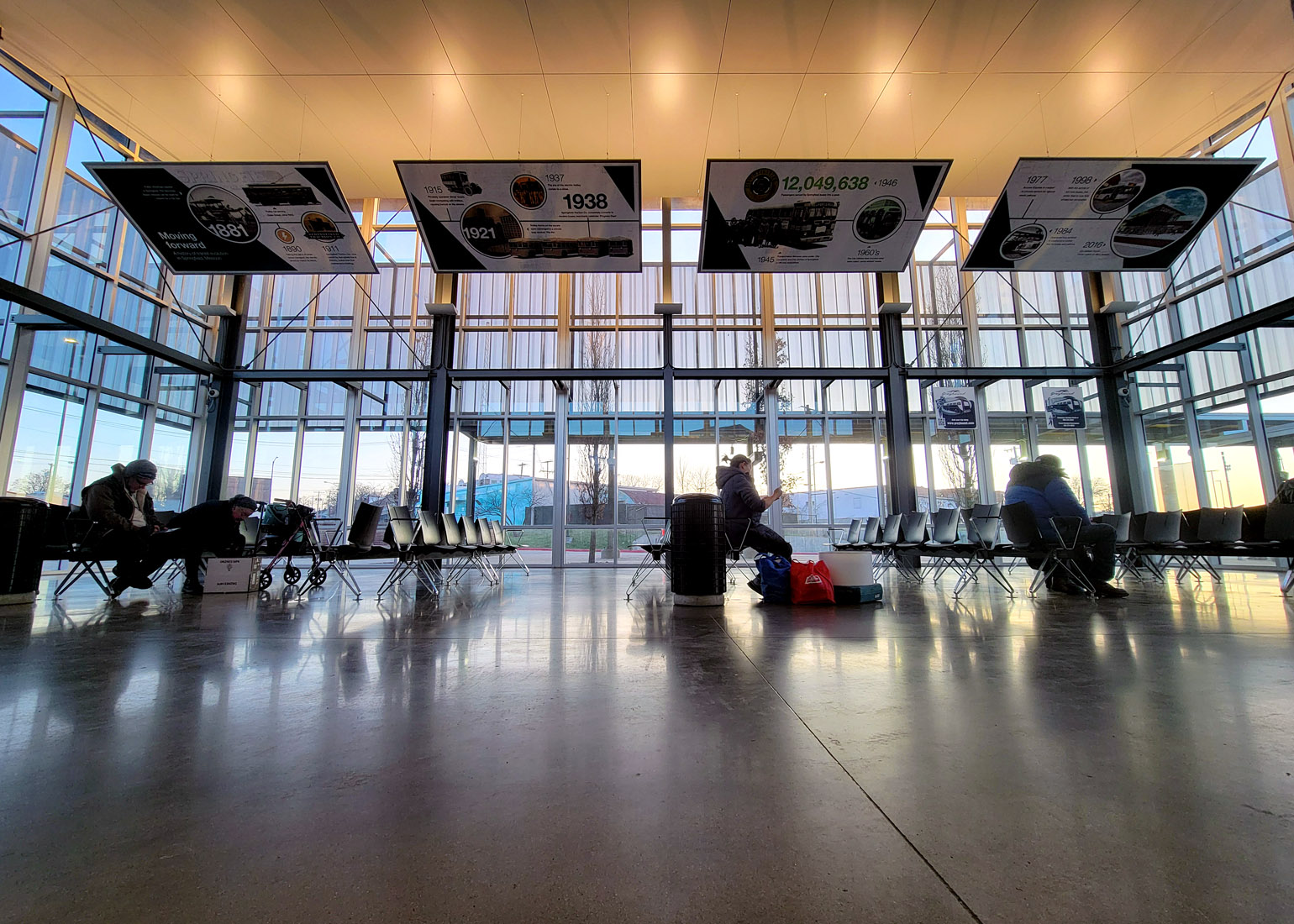
In the City Utilities Transit Center, aka bus depot, at 211 N. Main Ave., is a sign that states that in 1946 there were 12 million bus rides (not necessarily riders) in Springfield.
That was a different time, a different nation with far fewer cars.
In the fiscal year ended Sept. 30, there were 1.3 million bus rides in Springfield. That figures falls just short of what ridership was in 2019 prior to COVID-19.
Year over year, ridership is up 11%, Amy Derdall, senior vice president at City Utilities, said at the Nov. 30 Board of Public Utilities meeting.
According to Crawford, the most direct way to increase ridership is to lower fares. The inverse is true, too.
“The last time we changed fares was in 2007,” he said. “We increased — I think it was from 75 cents for a single ride — to $1.25 over the course of a couple of years. Ridership dropped fairly significantly at that time.”
Although lowering fares would likely increase ridership, it wouldn't necessarily broaden the demographic of the typical bus rider.
In Kansas City, spokeswoman Baker said, going to no-fare has anecdotally increased the ridership among those with lower incomes.
Springfield's bus stops by ridership:
STOP ON OFF TOTAL
City Utilities Transit Center 252,379 269,510 521,889
Kearney and Glenstone 34,371 38,217 72,588
Glenstone at Battlefield Mall 14,576 19,175 33,751
Boonville & Division 11,960 12,612 24,572
Mercy Hospital on Sunshine 10,317 10,173 20,490
Harvard at Walmart Supercenter 8,152 10,611 18,763
Boonville & Central 5,029 8,404 13,433
Kansas Expy & Talmage 5,952 7,021 12,973
Springfield Plaza & Zimmer 5,811 6,859 12,670
Campbell & Walnut Lawn 4,689 6,939 11,628
Olive & Boonville 6,266 3,889 10,155
She finally gets to work, then must wait for someone to let her in
“I just wish that there were better connections,” Bell-Newell says of navigating across Springfield.
Another thing she would change, she says, would be to have more buses running on weekends.
Since she works Saturdays — or did until Dec. 22 — she had to take an Uber to work, which cost her $44 to $50 roundtrip.
She praises the bus drivers for their helpfulness and good cheer.
“They are so patient with me,” she says.
She steps off the bus on West Brower Street, not far from her destination.
“Thank you! Have a wonderful day,” the driver tells her.
In the home stretch, Bell-Newell has a quarter-mile to walk to reach the Salvation Army at 1707 W. Chestnut Expressway.
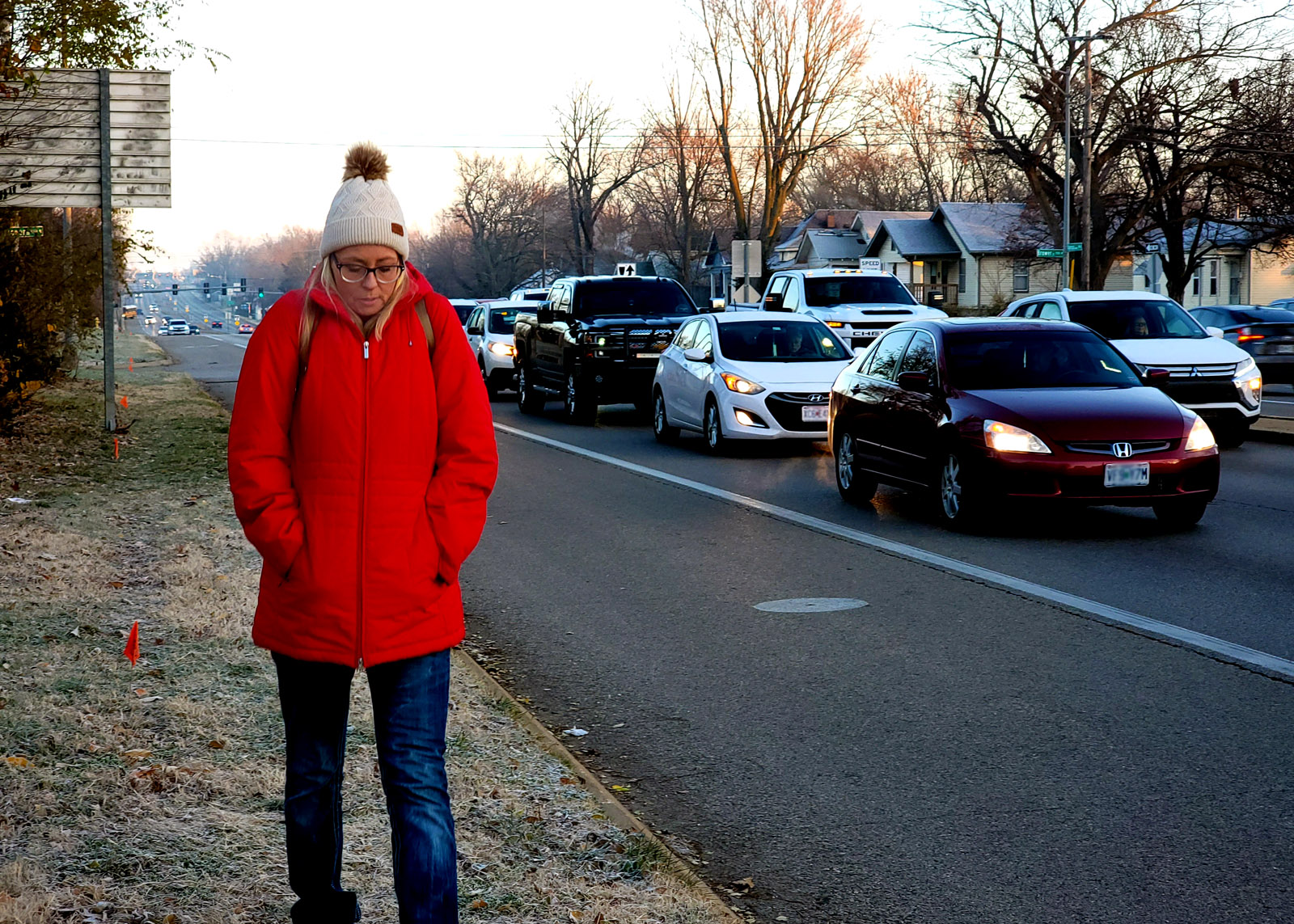
She strides with purpose in the slanted December morning light, within a few feet of backed-up traffic. Exhaust from vehicles lifts into the cold air.
There is no sidewalk here along Kansas Expressway. She walks on a sliver of grass.
Finally, she has made it to work, but she is early. As a bus rider, she does not have the luxury of getting here 15 minutes later.
She stands in the alcove of the building, waiting for the first employee to arrive to let her in.
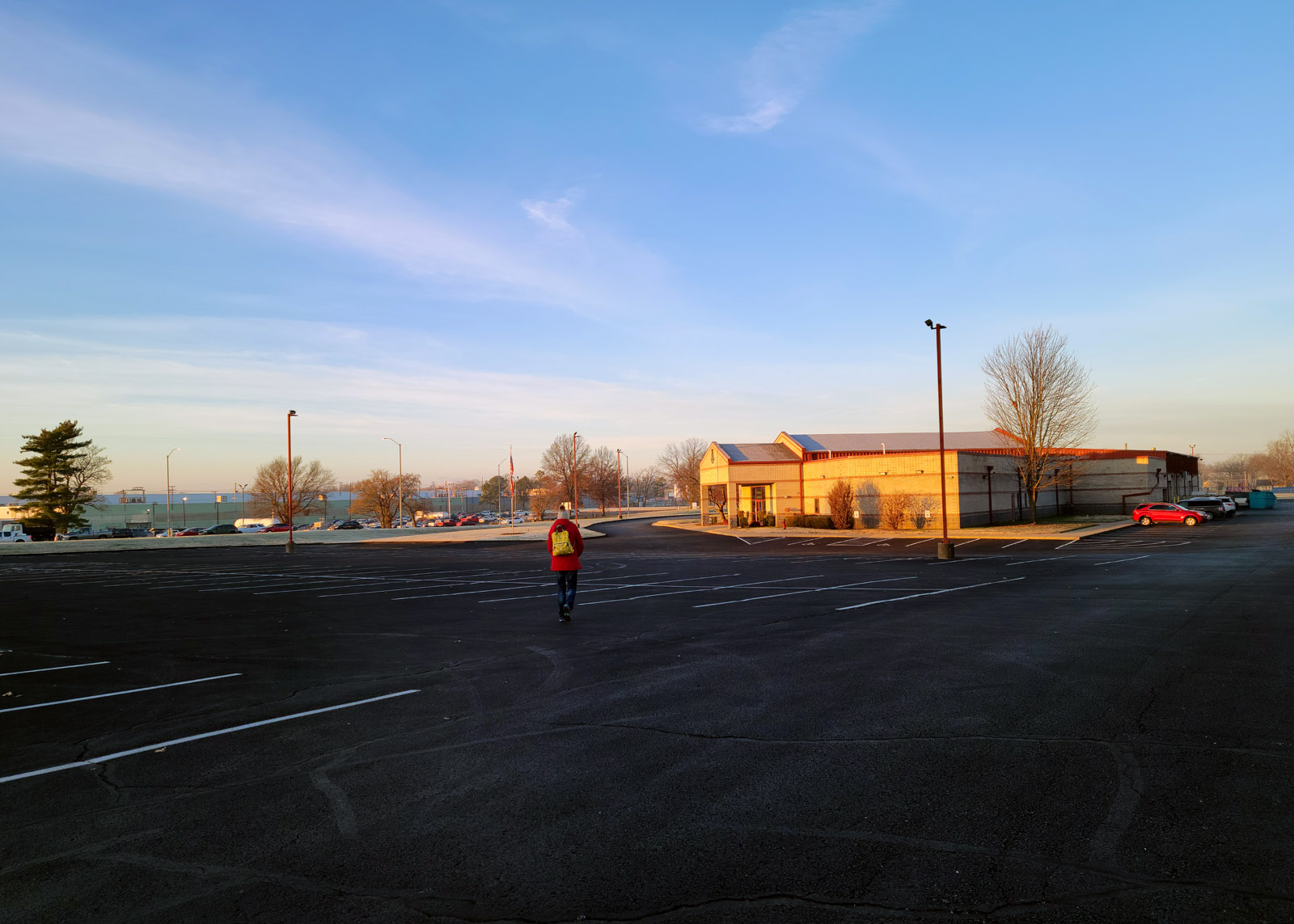
Bell-Newell is informed that her morning trek took an hour and 14 minutes.
It doesn't matter how long it took. She is where she needs to be.
“I want to be in the same area with my children,” she says. “So I am very determined.”







